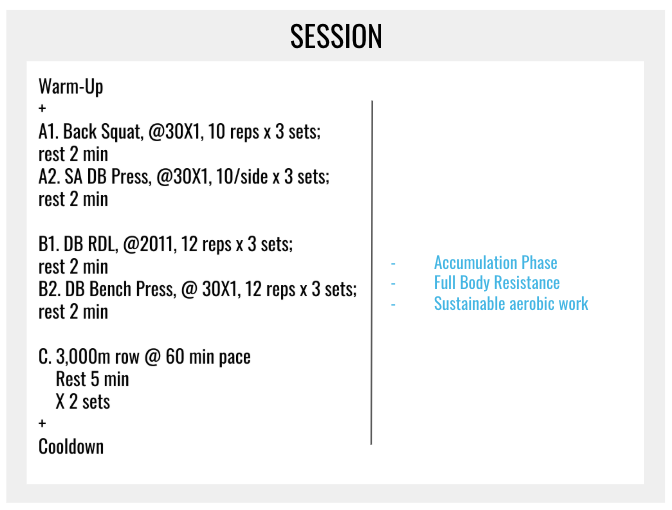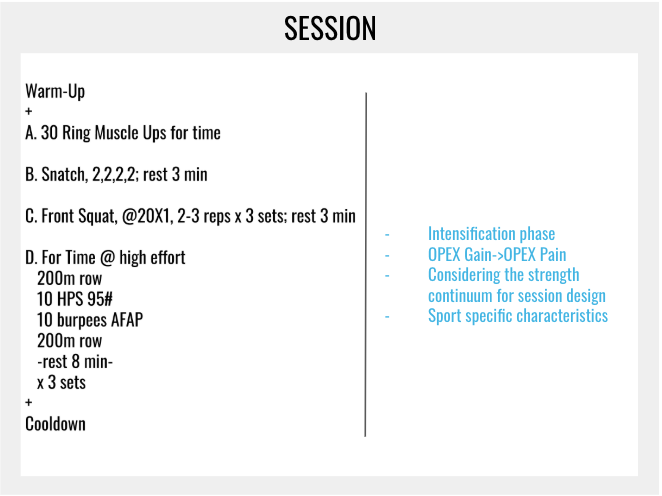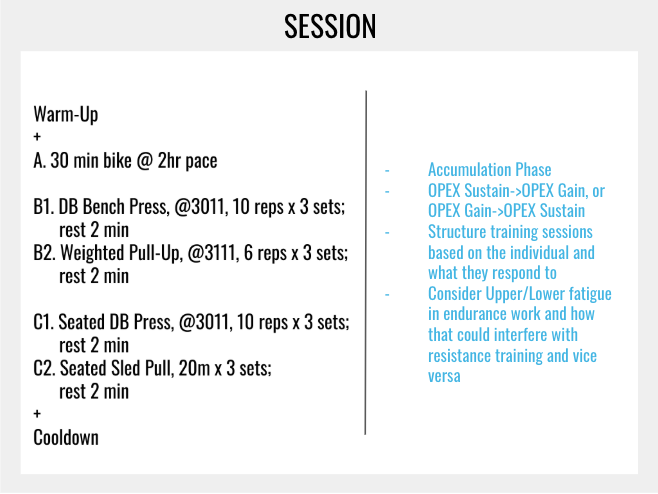THE PRINCIPLES OF CONCURRENT TRAINING
Concurrent Training: Programming for Strength, Power, and Endurance
At our latest quarterly Lunch and Learn OPEX Instructor Carl Hardwick hosted an educational meetup for local Arizona coaches to discuss how to use concurrent training to program for strength, power, and endurance.
Concurrent Training Defined
Concurrent training is the act of programming multiple energy systems in a training session to maximize all aspects of physical performance.
What Are The Body’s Three Energy Systems?
Gain – Creatine Phosphate and Anaerobic Alactic Work
Examples: Deadlifts and a 7-second AirBike sprint
Pain – glycolytic system
A 3-minute AirBike sprint
Sustain – aerobic system
A 3k row
Designing Training Programs
The bulk of this lunch and learn was focused on a discussion around how to write programs using concurrent training specifically around four different clientele: a general population, a competitive functional fitness, a strength, and an endurance client.
General Population Clients
“What do they need?”
Planning
For general population clients, there will be two main phases of program design: accumulation and intensification. Accumulation will consist of full-body resistance training, long to short aerobic progressions, and linear progressions from volume to intensity. The intensification phase will focus on increased intensity with lowered volume and aerobic work potentially being shorter and faster. Learn how OPEX Coaches go about planning their programs here.
An Example Session:
Competitive Functional Fitness
“How do you organize the chaos?”
Planning:
When programming for competitive functional fitness athletes there are six main principles we need to keep in mind.
Accumulation – Acquire skills, build volume, high aerobic and low glycolytic work
Intensification – Go from volume to intensity, faster aerobic, adding glycolytic work
Pre-comp – Put it all together, prepare for the competition at hand
Taper – Increase readiness
Competition – Chaos, all preparation builds to this phase of training. The base must be built.
Deload – Full system recovery, get away from the sport.
An Example Session:
Strength
“How do I increase neuromuscular adaptation?”
Planning:
For programming strength, we are going to stay within accumulation and intensification and alter back and forth. As always, consider your client’s training age as this will help determine how long they will spend in each of the phases and what is considered intensity vs. volume. Learn how to program strength for all different levels of clients here.
An Example Session:
The Endurance Athlete
“How can resistance training assist endurance work?”
Planning:
Due to the fact that endurance is key, we must bias accumulation phases to fit the volume required. Intensification is programmed to give the aerobic and musculoskeletal systems a break. Finally, make sure that resistance training does not hinder endurance work. For example, a marathon runner should not train their lower body the day before or after a run.
An Example Session:
What Are You Really Programming for?
We design programs to fix things and make our clients better, but in order to do this, we must first find the gaps. That is why great coaches conduct an initial assessment and ongoing assessments to determine the starting point for their programs and the efficacy of their designs. Learn how to conduct your own thorough assessments and start creating more insightful programs today by taking our OPEX Principles: Programming 101 course on LearnRx today.





